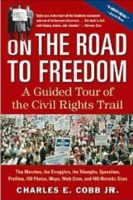 On the Road to Freedom: A Guided Tour of the Civil Rights Trail: This in-depth look at the civil rights movement goes to the places where pioneers of the movement marched, sat-in at lunch counters, gathered in churches; where they spoke, taught, and organized; where they were arrested, where they lost their lives, and where they triumphed.
On the Road to Freedom: A Guided Tour of the Civil Rights Trail: This in-depth look at the civil rights movement goes to the places where pioneers of the movement marched, sat-in at lunch counters, gathered in churches; where they spoke, taught, and organized; where they were arrested, where they lost their lives, and where they triumphed.
Award-winning journalist Charles E. Cobb Jr., a former organizer and field secretary for SNCC (Student Nonviolent Coordinating Committee), knows the journey intimately. He guides us through Washington, D.C., Maryland, Virginia, North Carolina, South Carolina, Georgia, Alabama, Mississippi, and Tennessee, back to the real grassroots of the movement.
He pays tribute not only to the men and women etched into our national memory but to local people whose seemingly small contributions made an impact. We go inside the organizations that framed the movement, travel on the “Freedom Rides” of 1961, and hear first-person accounts about the events that inspired Brown vs. Board of Education.
 Traveler’s Guide to the Civil Rights Movement: In 2004, the United States will celebrate the 50th anniversary of Brown v. Board of Education. As our country begins a national retrospective of the civil rights movement, here is the perfect book to help explore the long struggle toward racial equality.
Traveler’s Guide to the Civil Rights Movement: In 2004, the United States will celebrate the 50th anniversary of Brown v. Board of Education. As our country begins a national retrospective of the civil rights movement, here is the perfect book to help explore the long struggle toward racial equality.
Part guidebook, part civil rights primer, A Traveler’s Guide to the Civil Rights Movement memorializes the years 1954 to 1965 as well as the vast, underappreciated black history from which our modern civil rights movement began.
More than five million people visit civil rights and black history landmarks each year, from the National Voting Rights Museum and the King Center to lesser-known spots such as slave auction sites and the locations of crucial marches and boycotts. This guide provides suggested state and city tours of these historic places and offers thoughtful commentary on the importance of each landmark, giving us a unique lens through which to view one of America’s most important social movements.
Includes suggested state and city tours in Alabama, Arkansas, Florida, Georgia, Kansas, Louisiana, Maryland, Mississippi, North Carolina, Oklahoma, Pennsylvania, South Carolina, Tennessee, Virginia, and Washington, D.C.
 Alabama’s Civil Rights Trail: An Illustrated Guide to the Cradle of Freedom: No other state has embraced and preserved its civil rights history more thoroughly than Alabama. Nor is there a place where that history is richer. Alabama’s Civil Rights Trail tells of Alabama’s great civil rights events, as well as its lesser-known moments, in a compact and accessible narrative, paired with a practical guide to Alabama’s preserved civil rights sites and monuments.
Alabama’s Civil Rights Trail: An Illustrated Guide to the Cradle of Freedom: No other state has embraced and preserved its civil rights history more thoroughly than Alabama. Nor is there a place where that history is richer. Alabama’s Civil Rights Trail tells of Alabama’s great civil rights events, as well as its lesser-known moments, in a compact and accessible narrative, paired with a practical guide to Alabama’s preserved civil rights sites and monuments.
In his history of Alabama’s civil rights movement, Cradle of Freedom (University of Alabama Press, 2004), Frye Gaillard contends that Alabama played the lead role in a historic movement that made all citizens of the nation, black and white, more free.
This book, geared toward the casual traveler and the serious student alike, showcases in a vividly illustrated and compelling manner, valuable and rich details. It provides a user-friendly, graphic tool for the growing number of travelers, students, and civil rights pilgrims who visit the state annually.
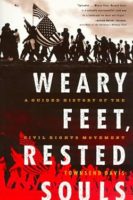 Weary Feet, Rested Souls: A Guided History of the Civil Rights Movement: Thirty years after the Civil Rights Movement transformed America, Weary Feet, Rested Souls brings the landscape of this compelling period of history back to life. Logging 30,000 miles of research and more than 100 hours of interviews with Civil Rights veterans, Townsend Davis has written both a history of the struggle and an indispensable traveler’s guidebook to Civil Rights in the Deep South.
Weary Feet, Rested Souls: A Guided History of the Civil Rights Movement: Thirty years after the Civil Rights Movement transformed America, Weary Feet, Rested Souls brings the landscape of this compelling period of history back to life. Logging 30,000 miles of research and more than 100 hours of interviews with Civil Rights veterans, Townsend Davis has written both a history of the struggle and an indispensable traveler’s guidebook to Civil Rights in the Deep South.
Ranging from Martin Luther King, Jr.’s childhood neighborhood to Philadelphia, Mississippi, where three Civil Rights workers were murdered, to Selma and Birmingham and scores of other sites, Weary Feet, Rested Souls is a uniquely inspiring and deeply commemorative guide to the Movement and its heroes.
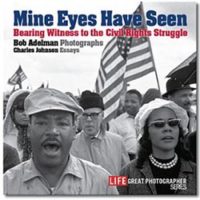 Mine Eyes Have SeenA stirring visual tribute to the Civil Rights Movement and the long and difficult battle for racial equality captures in more than 150 extraordinary photographs the leaders and events of the era, with portraits of Sidney Poitier, James Baldwin, Miles Davis, Martin Luther King, Jr., and many other activists, both famous and unknown, who took part in the struggle. 75,000 first printing.
Mine Eyes Have SeenA stirring visual tribute to the Civil Rights Movement and the long and difficult battle for racial equality captures in more than 150 extraordinary photographs the leaders and events of the era, with portraits of Sidney Poitier, James Baldwin, Miles Davis, Martin Luther King, Jr., and many other activists, both famous and unknown, who took part in the struggle. 75,000 first printing.
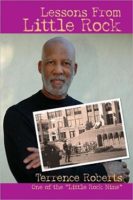 Lessons from Little Rock: Sober news reports of a U.S. Army convoy rumbling across the bridge into Little Rock cannot overpower this intimate, powerful, personal account of the integration of Little Rock Central High School.
Lessons from Little Rock: Sober news reports of a U.S. Army convoy rumbling across the bridge into Little Rock cannot overpower this intimate, powerful, personal account of the integration of Little Rock Central High School.
Showing what it felt like to be one of those nine students who wanted only a good high school education, Roberts’s rich narrative and candid voice take readers through that rocky year, helping us realize that the historic events of the Little Rock integration crisis happened to real people―to children, parents, our fellow citizens.
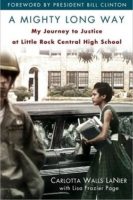 A Mighty Long Way: My Journey to Justice at Little Rock Central High School: When fourteen-year-old Carlotta Walls walked up the stairs of Little Rock Central High School on September 25, 1957, she and eight other black students only wanted to make it to class. But the journey of the “Little Rock Nine,” as they came to be known, would lead the nation on an even longer and much more turbulent path, one that would challenge prevailing attitudes, break down barriers, and forever change the landscape of America.
A Mighty Long Way: My Journey to Justice at Little Rock Central High School: When fourteen-year-old Carlotta Walls walked up the stairs of Little Rock Central High School on September 25, 1957, she and eight other black students only wanted to make it to class. But the journey of the “Little Rock Nine,” as they came to be known, would lead the nation on an even longer and much more turbulent path, one that would challenge prevailing attitudes, break down barriers, and forever change the landscape of America.
For Carlotta and the eight other children, simply getting through the door of this admired academic institution involved angry mobs, racist elected officials, and intervention by President Dwight D. Eisenhower, who was forced to send in the 101st Airborne to escort the Nine into the building. But entry was simply the first of many trials.
Breaking her silence at last and sharing her story for the first time, Carlotta Walls has written an engrossing memoir that is a testament not only to the power of a single person to make a difference but also to the sacrifices made by families and communities that found themselves a part of history.
 Carry Me Home: Birmingham, Alabama: “The Year of Birmingham,” 1963, was a cataclysmic turning point in America’s long civil rights struggle. Child demonstrators faced down police dogs and fire hoses in huge nonviolent marches against segregation. Ku Klux Klansmen retaliated by bombing the Sixteenth Street Baptist Church, killing four young black girls.
Carry Me Home: Birmingham, Alabama: “The Year of Birmingham,” 1963, was a cataclysmic turning point in America’s long civil rights struggle. Child demonstrators faced down police dogs and fire hoses in huge nonviolent marches against segregation. Ku Klux Klansmen retaliated by bombing the Sixteenth Street Baptist Church, killing four young black girls.
Diane McWhorter, daughter of a prominent Birmingham family, weaves together police and FBI records, archival documents, interviews with black activists and Klansmen, and personal memories into an extraordinary narrative of the personalities and events that brought about America’s second emancipation.
In a new afterword—reporting last encounters with hero Reverend Fred Shuttlesworth and describing the current drastic anti-immigration laws in Alabama—the author demonstrates that Alabama remains a civil rights crucible.
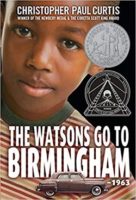 The Watsons Go to Birmingham: The Newbery Honor-winning American classic, The Watsons Go to Birmingham–1963 , celebrates 20 years with this anniversary edition featuring a special letter from Christopher Paul Curtis and an introduction by noted educator Dr. Pauletta Bracy.
The Watsons Go to Birmingham: The Newbery Honor-winning American classic, The Watsons Go to Birmingham–1963 , celebrates 20 years with this anniversary edition featuring a special letter from Christopher Paul Curtis and an introduction by noted educator Dr. Pauletta Bracy.
Enter the hilarious world of ten-year-old Kenny and his family, the Weird Watsons of Flint, Michigan. There’s Momma, Dad, little sister Joetta, and brother Byron, who’s thirteen and an “official juvenile delinquent.” When Momma and Dad decide it’s time for a visit to Grandma, Dad comes home with the amazing Ultra-Glide, and the Watsons set out on a trip like no other. They’re heading South to Birmingham, Alabama, toward one of the darkest moments in America’s history.
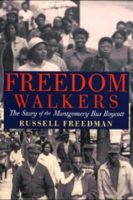 Freedom Walkers: The Story of the Montgomery Bus Boycott: A riveting account of the civil rights boycott that changed history by the foremost author of history for young people. Now a classic, Freedman’s book tells the dramatic stories of the heroes who stood up against segregation and Jim Crow laws in 1950s Alabama. A master of succinct historical narratives Freeman explains the contributions of and sacrifices made by Rosa Parks and Claudette Colvin, who refused give up their seats, to Jo Ann Robinson, who began the boycott, to Martin Luther King, Jr., whose leadership was instrumental is carrying it through, and others. Full of eye-witness reports, iconic photographs from the era, and crucial primary sources, this work brings the narratives alive for contemporary readers. A Map, source notes, a bibliography, and other backmatter make is a valuable classroom resource. The book received five starred reviews, the Flora Stieglitz Straus Award, and Jane Addams Peace Association Honor Book Award among other honors.
Freedom Walkers: The Story of the Montgomery Bus Boycott: A riveting account of the civil rights boycott that changed history by the foremost author of history for young people. Now a classic, Freedman’s book tells the dramatic stories of the heroes who stood up against segregation and Jim Crow laws in 1950s Alabama. A master of succinct historical narratives Freeman explains the contributions of and sacrifices made by Rosa Parks and Claudette Colvin, who refused give up their seats, to Jo Ann Robinson, who began the boycott, to Martin Luther King, Jr., whose leadership was instrumental is carrying it through, and others. Full of eye-witness reports, iconic photographs from the era, and crucial primary sources, this work brings the narratives alive for contemporary readers. A Map, source notes, a bibliography, and other backmatter make is a valuable classroom resource. The book received five starred reviews, the Flora Stieglitz Straus Award, and Jane Addams Peace Association Honor Book Award among other honors.
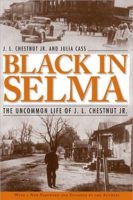 Black in Selma: The Uncommon Life of J.L. Chestnut, Jr.: On March 7, 1965, George Wallace, Governor of Alabama, lined the Edmund Pettus Bridge in Selma with state troopers to prevent a civil rights march to Montgomery for the black vote. Among those present was a thirty-four-year-old lawyer, J. L. Chestnut, Jr., the only black lawyer in Selma at that time, a man whose own struggle both parallels and exemplifies the growth of the civil rights movement since the early sixties. Journalist Julia Cass met Chestnut while covering the South for The Philadelphia Inquirer and was struck not only by the representative nature of his story but by his deeply perceptive reading of the realities of power and politics in the South. The result of their collaboration is Black in Selma, Chestnut’s extraordinary autobiography.
Black in Selma: The Uncommon Life of J.L. Chestnut, Jr.: On March 7, 1965, George Wallace, Governor of Alabama, lined the Edmund Pettus Bridge in Selma with state troopers to prevent a civil rights march to Montgomery for the black vote. Among those present was a thirty-four-year-old lawyer, J. L. Chestnut, Jr., the only black lawyer in Selma at that time, a man whose own struggle both parallels and exemplifies the growth of the civil rights movement since the early sixties. Journalist Julia Cass met Chestnut while covering the South for The Philadelphia Inquirer and was struck not only by the representative nature of his story but by his deeply perceptive reading of the realities of power and politics in the South. The result of their collaboration is Black in Selma, Chestnut’s extraordinary autobiography.
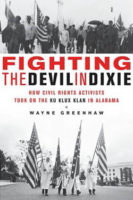 Fighting the Devil in Dixie: How Civil Rights Activists Took on the Ku Klux Klan in Alabama: Examining the growth of the Ku Klux Klan (KKK) following the birth of the civil rights movement, this book is filled with tales of the heroic efforts to halt their rise to power. Shortly after the success of the Montgomery bus boycott, the KKK—determined to keep segregation as the way of life in Alabama—staged a resurgence, and the strong-armed leadership of Governor George C. Wallace, who defied the new civil rights laws, empowered the Klan’s most violent members. Although Wallace’s power grew, not everyone accepted his unjust policies, and blacks such as Martin Luther King Jr., J. L. Chestnut, and Bernard LaFayette began fighting back in the courthouses and schoolhouses, as did young southern lawyers such as Charles “Chuck” Morgan, who became the ACLU’s southern director; Morris Dees, who cofounded the Southern Poverty Law Center; and Bill Baxley, Alabama attorney general, who successfully prosecuted the bomber of Birmingham’s 16th Street Baptist Church and legally halted some of Governor Wallace’s agencies designed to slow down integration. Dozens of exciting, extremely well-told stories demonstrate how blacks defied violence and whites defied public ostracism and indifference in the face of kidnappings, bombings, and murders.
Fighting the Devil in Dixie: How Civil Rights Activists Took on the Ku Klux Klan in Alabama: Examining the growth of the Ku Klux Klan (KKK) following the birth of the civil rights movement, this book is filled with tales of the heroic efforts to halt their rise to power. Shortly after the success of the Montgomery bus boycott, the KKK—determined to keep segregation as the way of life in Alabama—staged a resurgence, and the strong-armed leadership of Governor George C. Wallace, who defied the new civil rights laws, empowered the Klan’s most violent members. Although Wallace’s power grew, not everyone accepted his unjust policies, and blacks such as Martin Luther King Jr., J. L. Chestnut, and Bernard LaFayette began fighting back in the courthouses and schoolhouses, as did young southern lawyers such as Charles “Chuck” Morgan, who became the ACLU’s southern director; Morris Dees, who cofounded the Southern Poverty Law Center; and Bill Baxley, Alabama attorney general, who successfully prosecuted the bomber of Birmingham’s 16th Street Baptist Church and legally halted some of Governor Wallace’s agencies designed to slow down integration. Dozens of exciting, extremely well-told stories demonstrate how blacks defied violence and whites defied public ostracism and indifference in the face of kidnappings, bombings, and murders.
DVD’s
 King: Tom Brokaw hosts this in-depth look at the remarkable life and legacy of civil rights icon Martin Luther King. Complete with testimony from King’s contemporaries and from those who continue to spread his message of peace, KING illuminates the lasting influence of his leadership. Forty years after Martin Luther King’s assassination, HISTORY, with newsman Tom Brokaw, takes viewers through the extraordinary life and times of America’s civil rights visionary. KING goes beyond the legend to portray the man, the questions, the myths and, most importantly, the relevance of Dr. King’s message in today’s world. Includes a rare interview with his son, Martin Luther King III, as well as associates from the civil rights campaigns such as Andy Young and Harry Belafonte, and contemporary figures such as former President Bill Clinton, Condoleezza Rice, Bono, Forest Whitaker, Chuck D, and others.
King: Tom Brokaw hosts this in-depth look at the remarkable life and legacy of civil rights icon Martin Luther King. Complete with testimony from King’s contemporaries and from those who continue to spread his message of peace, KING illuminates the lasting influence of his leadership. Forty years after Martin Luther King’s assassination, HISTORY, with newsman Tom Brokaw, takes viewers through the extraordinary life and times of America’s civil rights visionary. KING goes beyond the legend to portray the man, the questions, the myths and, most importantly, the relevance of Dr. King’s message in today’s world. Includes a rare interview with his son, Martin Luther King III, as well as associates from the civil rights campaigns such as Andy Young and Harry Belafonte, and contemporary figures such as former President Bill Clinton, Condoleezza Rice, Bono, Forest Whitaker, Chuck D, and others.
 4 Little Girls: From the director of ‘ ‘Do The Right Thing’ ‘ and ‘ ‘Malcolm X’ ‘ comes ‘ ‘a masterpiece.’ ‘ (Chicago Tribune) When a bomb tears through the basement of a black Baptist church on September 15, 1963, it takes the lives of four young girls. This racially motivated crime, sparks the nation’s outrage and helps fuel the civil rights movement sweeping across the country.
4 Little Girls: From the director of ‘ ‘Do The Right Thing’ ‘ and ‘ ‘Malcolm X’ ‘ comes ‘ ‘a masterpiece.’ ‘ (Chicago Tribune) When a bomb tears through the basement of a black Baptist church on September 15, 1963, it takes the lives of four young girls. This racially motivated crime, sparks the nation’s outrage and helps fuel the civil rights movement sweeping across the country.

